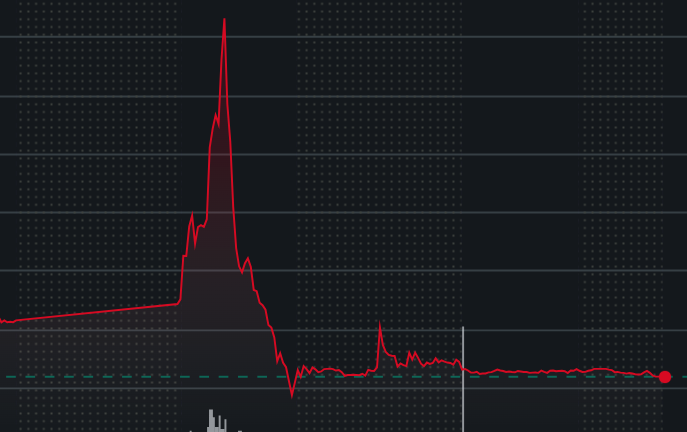Inno Holdings Inc. ($INHD) – Parabolic Rise, Crash, and Outlook

“INHD has been a casino for thrill-seekers – a poster child for pump, dump, and maybe dead-cat bump. This stock went full Icarus, flying from two bucks to nearly $20 in a blink, only to nosedive back to penny-stock land just as fast. The underlying business? Let’s just say selling steel studs and pipe dreams doesn’t justify that kind of moonshot. Right now, the vibe on the street is skeptical; once bitten twice shy. Sure, Inno talks a big game about high-tech marketplaces and AI-powered building gizmos, but the market’s not buying the hype without receipts.
Company Background
Inno Holdings Inc. (NASDAQ: INHD) is a Texas-based building technology company that manufactures cold-formed steel framing components and prefabricated homes. Founded in 2019 and headquartered in Brookshire, TX, INHD’s mission has been to transform the construction industry with proprietary steel-framing technology (aiming to replace traditional wood/steel structures) . The company’s core business involves turning raw materials into precise steel framing products for residential, commercial, industrial, and infrastructure projects.
Despite its construction roots, INHD is expanding into tech-oriented ventures. In late 2024 the firm announced plans to enter electronic product trading and digital initiatives, seeking new revenue streams beyond construction . By May 2025, Inno described itself as a “trade-focused building technology and electronic products trading company,” signaling a pivot toward tech and e-commerce alongside its construction products . This blend of construction and tech puts INHD in the microcap category, with a tiny market cap (~$10–20M) and minimal revenue (≈$1 million annually) – factors that set the stage for extreme stock volatility.
Recent Developments and Key Catalysts
Reverse Stock Split: On October 8, 2024, Inno’s board approved a 1-for-10 reverse stock split to regain compliance with Nasdaq’s $1.00 minimum price requirement . The split (effective Oct 10) shrank the float and temporarily boosted the share price, a common tactic for microcaps at risk of delisting. Post-split, INHD had only ~4.4 million shares outstanding (float ~3.0M) , setting up a lowfloat scenario that can magnify price swings.
Business Expansion: In December 2024, Inno announced an expansion into the electronics and digital space, launching initiatives in electronic product trading and “digital transformation” . This included partnering with Hong Kong-based New Life Technology in May 2025 to develop a B2B online marketplace for electronic products . The planned platform, leveraging cloud and big data, would connect manufacturers directly with business buyers . Management touted this strategic cooperation as a “significant milestone” and cited optimism that easing China–US relations could boost the electronics market . These announcements acted as catalysts, injecting a tech-sector narrative into a construction microcap and potentially attracting speculative interest.
Financial and Governance Changes: In January 2025, red flags emerged when INHD changed its independent auditor after identifying a material weakness in internal controls . The company dismissed its prior auditor (Simon & Edward LLP) and engaged JWF Assurance PAC for the FY2025 audit, acknowledging it lacked adequate policies and procedures in key financial controls . Around the same time, the CFO (Tianwei Li) resigned and a new CFO was appointed amid these accounting concerns.
Price Trajectory: Meteoric Rise and Collapse
INHD’s stock chart through 2024–2025 resembles a parabolic boom-and-bust. After the October 2024 reverse split, shares initially languished near the low-single-digits. Late in 2024, the expansion announcements gave the stock a jolt (a modest 5% pop on the news ), but the real fireworks came in spring 2025. Starting in early April 2025, INHD began an eye-catching rally – the stock ran from roughly $5 up to the high single-digits by mid/late April . By April 21, 2025, Inno had logged six straight up days, closing at $8.56 (that day alone up 41% ) as traders piled in ahead of earnings. The following day it hit an intraday high around $10.23 . At this point, INHD had gained well over 100% in a couple of weeks, showcasing classic FOMO-driven momentum in a small float stock.
Climax Run to $19: The stock’s 52-week high of $19.78 occurred on May 12, 2025 – but in extraordinary fashion. On that day, INHD opened around $6.29, then plunged to an intraday low of $2.21 before skyrocketing to $19.78 all in the same session . This ~795% swing from low to high happened on extreme volume (~27 million shares traded) , indicating a frenzy of day trading volatility. Likely multiple trading halts occurred as the stock hit circuit-breakers. By the closing bell on May 12, all the gains vanished – INHD closed at $2.36, down 56% from the prior close . In other words, the stock round-tripped from a euphoric peak back to penny-stock levels in hours, trapping any late buyers in a brutal reversal.
Such wild intraday action suggests a blow-off top: possibly a mix of forced covering (or a short squeeze attempt) followed by heavy profit-taking and panic selling. The trigger is not entirely clear – it coincided with the company’s May 12 press release about the New Life Tech partnership, which may have initially excited the market, or it could have been pure technical momentum that spiraled out of control. Regardless, the outcome was a dramatic pump-and-dump style move. As one analysis noted, parabolic surges like this are “typically unsustainable and eventually lead to a sharp reversal or correction”, often crashing as fast as they rose – INHD proved to be a textbook case.
Aftermath: Following the May 12 collapse, Inno’s stock rebounded slightly. On May 13 it bounced +41% to around ~$3.34 , and it’s been hovering in the low-$3 range in mid-May 2025. This is still far below the peak and even below where it traded prior to the April run-up. Essentially, INHD completed a full round-trip from <$3 to ~$10+ and back to ~$3 within a matter of weeks, with an ephemeral spike to $19 in between. The current ~$3 price (as of May 2025) reflects a shell-shocked market trying to reassess the company’s true value after the hype unwound.
Comparables: Parabolic Rise-and-Fall in Microcaps
Inno’s boom-bust pattern is not unique – many microcap stocks (especially in tech or emerging industries) have experienced similar parabolic runs followed by crashes. These moves are often driven by a burst of speculative enthusiasm (sometimes news-driven, sometimes purely momentumdriven) that proves unsustainable:
ToughBuilt Industries (TBLT) – a construction tool microcap – provides a comparable case. TBLT saw its stock spike 35% in one day on a rosy sales report in 2022 (helped by a tiny float after reverse splits). But such gains were fleeting: over the following weeks TBLT gave back those gains and more, as is common when initial euphoria fades. Like INHD, ToughBuilt repeatedly used dilutive financing and stock splits, and its chart is a series of spikes and long descents.
Camber Energy (CEI) – though an energy play, it became a meme-like microcap in 2021 with a
meteoric rise driven by retail forums. CEI ran from pennies to several dollars on speculative buzz,
then plunged back to earth, prompting analysts to call it “more a pump-and-dump asset rather
than an investment” . The pattern of a flashy rally absent fundamental improvement, followed
by a collapse, is analogous to INHD’s trajectory.
Blockchain/AI Pivots: There’s a long history of small companies that pivot to hot sectors (adding “.com” or “AI” to their name) and enjoy short-lived stock pops. For example, a few years ago a beverage company that renamed itself for blockchain saw shares surge then crash. Inno’s expansion into digital trading has echoes of this trend – investors have seen similar stories where the initial pop eventually retraces when hype gives way to fundamentals.
General Outcome: Typically, stocks that chart a parabolic spike then crash do not recover their highs. Many continue drifting down or flatlining as early speculative money exits. As CNBC’s Jim Cramer cautioned, these kinds of vertical moves carry inherent danger – once the momentum breaks, latecomers are left “holding the bag” and the stock often languishes at a fraction of its peak value. The sharp reversal in INHD’s case aligns with that common outcome, and historical precedent suggests caution: unless the company delivers tangible improvements, sustained recovery is a long shot.
Outlook and Potential Scenarios
Looking ahead, Inno Holdings faces a pivotal period in determining whether it can transition from speculative plaything to a stable growth story. Here are some potential outcomes and factors to watch:
Base Case – Post-Hype Consolidation: The most likely scenario is that INHD will stabilize in the low-single-digits (say $2–$4 range) in the near term. The wild volatility should cool off as the speculative excess dissipates. The stock may trade sideways as investors await real news (such as earnings data or updates on the new marketplace). Market sentiment is cautious now – after a 90%+ collapse from the top, confidence needs to be rebuilt. Technically, ~$2.20 (the recent low) might act as a support floor, while any bounce likely faces resistance around $5 (where the stock traded before the final collapse) . Absent a new catalyst, a drift or gradual grind lower is possible, especially if incremental selling from dilution continues.
– Bull Case – Execution and Another Rally: If the company can demonstrate progress – for instance, announce meaningful revenue contracts in its B2B platform or report improved financials – it could spark renewed interest. Microcaps can stage secondary rallies, especially if broader market sentiment for small caps improves. A constructive development (e.g., betterthan-expected earnings, an acquisition, or a big partnership) might let INHD shares rally again, perhaps retesting mid-single-digits or higher. However, even a bullish move would likely be tempered; breaking back to double-digits would require a game-changing outcome. The company’s own technical analysis in early May projected a wide 3-month trading range with 90% probability of $3.14 to $12.03 – reflecting huge uncertainty. In a best case, one could imagine INHD maybe clawing toward the upper single-digits if it catches another speculative wave. But that would probably require meme-level hype or clear business traction.
– Bear Case – Continued Decline: The bearish view is that Inno could keep sinking. Many microcaps that pop and drop eventually fade to new lows once the spotlight moves on. With the company likely to tap its $15M equity line, more share issuance could steadily dilute value and pressure the stock. If upcoming earnings or SEC filings reveal further issues (e.g. going concern warnings, higher losses, or delays in projects), INHD could slip back under $2. Another reverse split could even loom if it can’t maintain Nasdaq compliance long-term. Essentially, the bear case sees INHD following the trajectory of numerous penny stocks that grind down to pennies over time.
Volatility to Continue: One near-certainty is that volatility will remain high. The stock’s recent Average True Range was enormous (hundreds of percent) . Even after the crash, daily swings of 10–20% are common . Traders may continue to target INHD for short-term plays, meaning sharp pops or drops on any given day aren’t off the table. For long-term investors, this makes it tricky – the ride will be bumpy, and timing entries/exits is difficult. Caution is warranted given the “very high risk” nature of the stock noted by analysts.
In summary, INHD’s future will hinge on whether it can back up its ambitious narrative with real performance. Right now it trades on hope and hype more than on financial metrics. The forwardlooking risk/reward is highly speculative. A reasonable expectation is to assume the stock won’t approach its $19 peak again unless something truly extraordinary occurs. More likely, it will either languish or see only minor rallies unless concrete catalysts materialize.
What to Watch: Investors should keep an eye on upcoming SEC filings (10-Qs for quarterly results) to see if revenue from construction or new ventures is growing, and whether losses are narrowing. Also watch for any news on the B2B platform development progress. If the venture with New Life Tech produces early traction, it could improve sentiment. Conversely, any indication that the expansion is faltering, or that more financing is needed, would reinforce the negative bias. Inno’s ability to restore credibility (perhaps by fixing its internal controls and avoiding further shareholder dilution in the near term) will be crucial if it wants to break out of the microcap boom-bust cycle.
Marginfall Take
INHD has become a case study in speculative mania — a stock that skyrocketed from $2 to nearly $20, only to come crashing back to earth just as violently. It’s been less of an investment and more of a slot machine for thrill-chasers. The business behind it? Selling steel studs and lofty tech buzzwords — hardly the foundation for a $500 million valuation.
They’re pitching AI-enhanced building platforms and marketplace innovation, but the market’s not biting anymore — not without actual earnings to back it up. Add in shareholder dilution, a warning-shot from auditors, and shaky financials, and you’ve got more red flags than reasons to stay bullish.
Could it bounce again? Technically yes — thin floats and meme momentum can trigger random spikes. But we think the burn from last time was deep enough to keep retail cautious and institutions on the sidelines.
Our target: $8.50 in the near term, assuming the hype continues to fizzle. If they manage a turnaround, more power to them. Until then, we’re staying grounded. The narrative has flipped — from “to the moon” to “prove it.”











